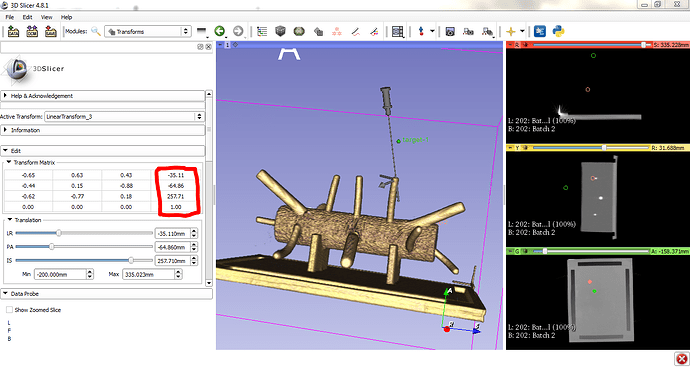Operating system: windows 7
Slicer version: 4.8.1
Expected behavior:
Actual behavior:
Hello,
I create a needle model to insert it to a specific region in my 3D model in slicer. This way, the position of the needle tip and the orientation of the needle is important. The desired pose of the needle is obtained by the translation and rotation part of the transform module (the needle model is defined as the transformed i.e the active transform is applied to it.)
The problem is that:
First: if i save the txt.file of the linear transform and load it in matlab, it can be undestood that the rotation part is not really the rotation matrix i.e the inverse and the traspose are not equal.
(I convert the matrix from the LPS to RAS and the one that i load in matlab is exactly the same as seen in slicer)
Second: The result is not the same as i use the invert in slicer in comparison to the inverse of the matrix from matlab.
I would be appreciated if anyone could help me…





